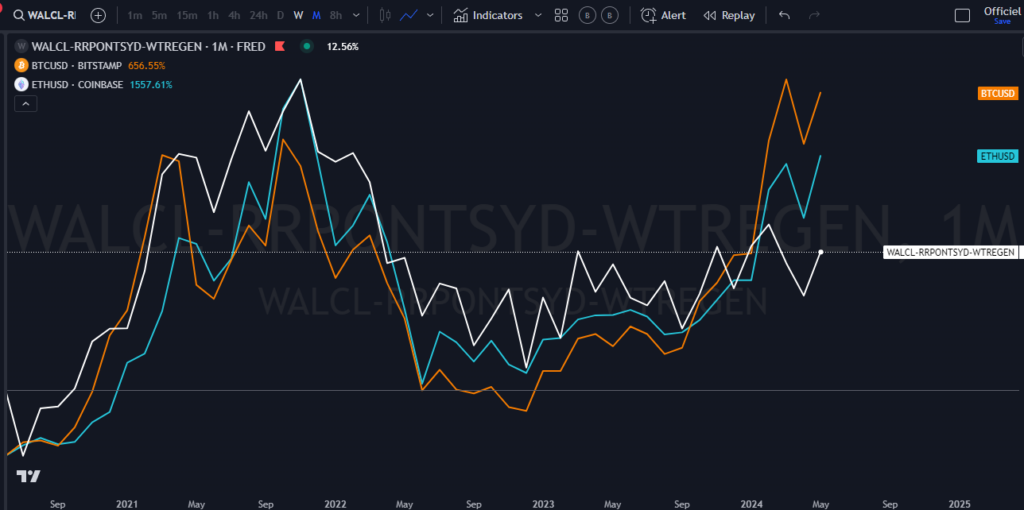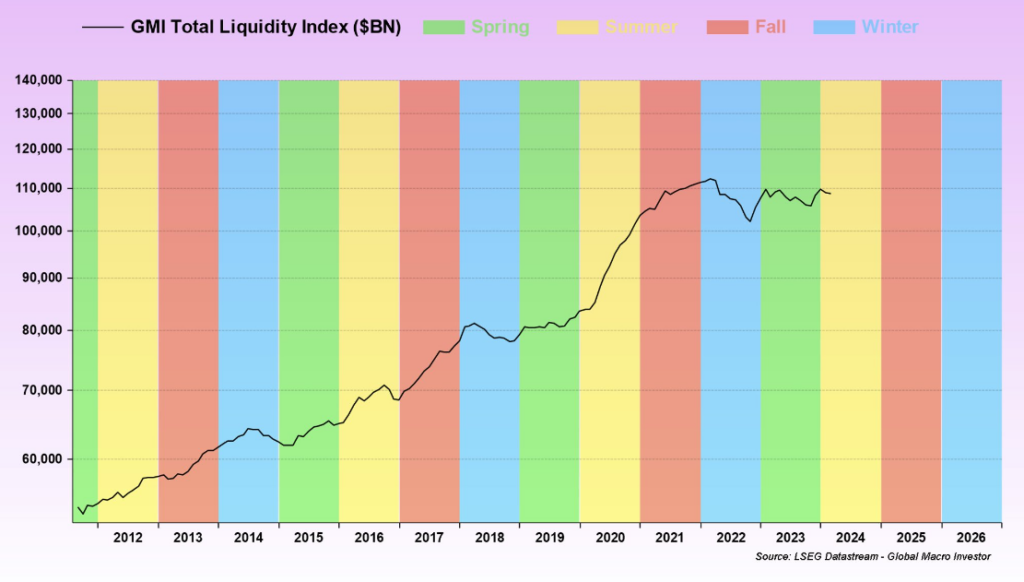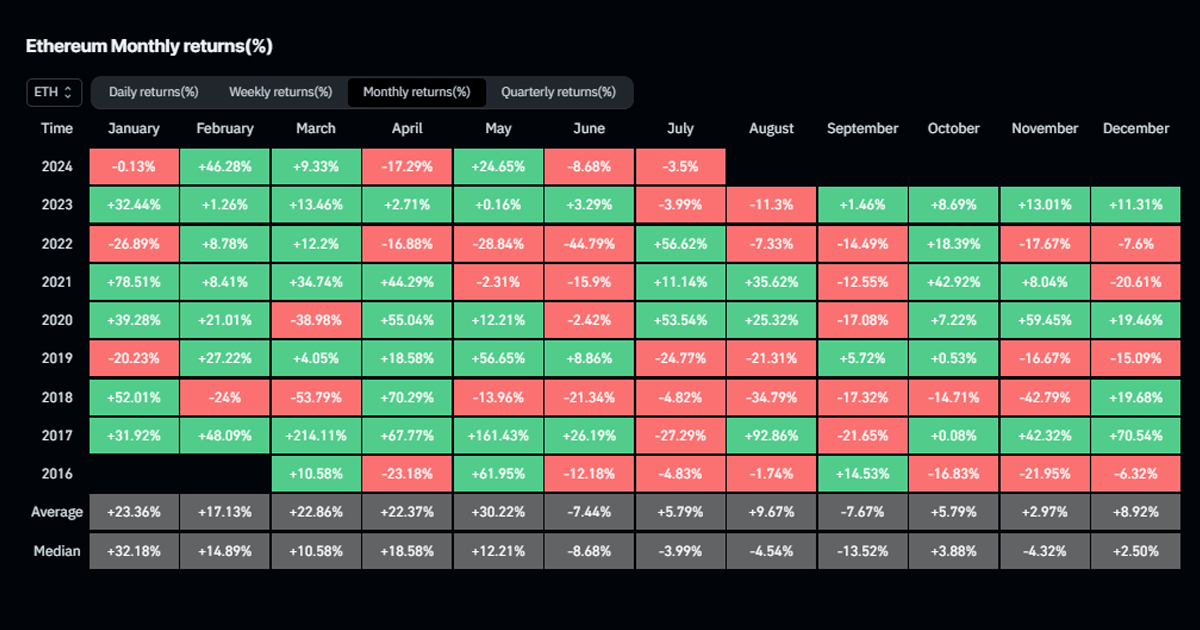Ethereum
Crypto: Is Ethereum catching up?

Mon May 27, 2024 ▪ 7 min reading ▪ by Laetitia B.
In the past, each rise has gone through different phases stimulated by a rotation of capital. In general, Bitcoin is often the leader of the bull run and the favorite in the early stages. Following the weaker performance of Ethereum compared to bitcoin, we will focus on the factors favorable to a rotation of capital towards Ethereum.
The principle of asset rotation
In traditional finance, there are several types of asset turnover. This may involve a sector rotation (technology, industrial, financial, healthcare, etc.) or a rotation of asset types (bonds, stocks, commodities, forex, etc.). Capital moves depending on the context and the economy. Rotation can come from taking profits after a significant performance to move towards another sector or a less valued type of asset while following the economic context. This is often the case between cyclical and defensive sectors for example.
Let’s also take an example over a very long term horizon, that is to say over several decades, we can see this cyclical rotation between raw materials and the S&P500 index in the graph below:
This type of chart highlights that in the coming years, the performance of commodities should be more advantageous than that of the S&P500.
The different phases of crypto
When you look at the cryptocurrency market, there are several phases in terms of rotation, whether between bitcoin, Ethereum, large caps and altcoins. And usually that comes from a gradual rotation.
Phase 1: Bitcoin is the leader, the store of value in the crypto market. It is the oldest and most democratized in the sphere of cryptocurrencies. It is on bitcoin that the first capital inflows arrive at the start of a bull market. Since 2024, bitcoin has been available in spot ETF form, which is an advantage in stimulating demand. And at the same time, when demand is stimulated, capital inflows increase. During phase 1, Bitcoin tends to outperform Ethereum. And only when Ethereum begins to approach Bitcoin’s performance is phase 2 near. We can possibly see this rotation with the example below which highlights the ETC/BTC ratio:
Phase 2: Ethereum, which is the number 2 cryptocurrency in the cryptosphere, outperforms bitcoin. This can be seen in the chart below with the 2021 bull run.
Phase 3: It is the turn of large caps (Doge, LTC, XRP, etc.) to outperform bitcoin.
Phase 4: The altcoin season begins when there is significant capital turnover. That is, the money invested in bitcoin at the start of the bull run shifts to other cryptocurrencies, small and mid caps, and even memes. During the altcoin season, we see a reduction in Bitcoin dominance. Here is a graph that highlights this:
To better illustrate this generally, here is the timeline below:
The economic environment and the different phases of the cryptocurrency markets
The evolution of cryptocurrencies is quite cyclical, just like the economy. That is to say, we find cycles of growth and cycles of decline. Like any riskier asset class, it evolves in a favorable and accommodating context. A favorable context can be defined in several ways. For example, when growth rebounds, there is an acceleration in growth, which constitutes a favorable environment for cryptocurrencies. Consumer confidence is positive, which encourages capital inflows. Conversely, when we face an economic downturn, it is often represented by a bear market in cryptocurrencies. Each cycle often lasts on average a year and a half to two years, just like economic cycles. So, if you add up a bull market and a bear market, that’s 4 years, just like the halving process:
Another positive element for performance is also liquidity. When liquidity is abundant, cryptocurrencies thrive. For example, injections of liquidity during COVID, capital circulated more in the markets. Financial conditions have been very relaxed. Therefore, more money in circulation to buy the same good implies an increase in prices.
Regarding liquidity in the current situation, we can see the graph below highlighting the evolution of liquidity and bitcoin:

 Source: Commercial view
Source: Commercial view
Staying in the same context, that is to say liquidity, we can also see favorable seasons (summer and autumn being the best):

 Source: Twitter
Source: Twitter
Ethereum lag explained by several factors
As mentioned earlier, Ethereum often lags Bitcoin during the first few months of a bull run. This is mainly because capital first flows into bitcoin, the store of value. As for Ethereum, it is no longer the only one to be well positioned since it is closely followed by Solana. It also involves competition. That said, like bitcoin, Ethereum should benefit from greater inflows since the approval of ETFs is official. Such products imply a greater potential to attract new investors, whether for tax reasons (introduction of the product into tax-advantaged accounts) or simply because an ETF is an easily accessible product (no need to open several brokerage accounts) and inexpensive. This is why approval would be a good catalyst for bitcoin to catch up. Therefore, several arguments align in favor of Ethereum’s outperformance, such as a favorable context, new products available and the timing of the phases (as noted above).
Bitcoin or Ethereum, which one to choose?
Bitcoin and Ethereum have different strengths that can help diversify a crypto portfolio. One of the particularities of bitcoin is that it has a limited supply of 21 million, and its production is halved every 4 years. This can be considered a safe haven, especially in countries suffering from hyperinflation. Ethereum also has some special features, such as the fact that it can be used to host other cryptos and decentralized applications.
The more adoption and democratization continues with the same dynamics, the more we will be faced with new products because approvals will become easier and easier. For example, we could have an ETF bringing together Bitcoin and Ethereum to simplify the choice. This opens up many possibilities in terms of capital.
Conclusion
It can be concluded that the capital turnover system is cyclical and that Ethereum has several reasons to take the lead and outperform bitcoin for the rest of the cycle. One of the main catalysts for this development would be, as with bitcoin, the approval of ETFs. This will improve liquidity in the coming months.
Maximize your Cointribune experience with our “Read to Earn” program! Earn points for every article you read and access exclusive rewards. Sign up now and start earning benefits.
Click here to join “Read to Earn” and turn your passion for crypto into rewards!
Laetitia B.
After working for 7 years in a Canadian bank, including 5 years in a portfolio management team as an analyst, I left my position to devote myself fully to financial markets. My goal here is to democratize financial market information to the Cointribune audience on different aspects, including macro analysis, technical analysis, intermarket analysis, etc.
DISCLAIMER
The views, thoughts and opinions expressed in this article belong solely to the author and should not be considered investment advice. Do your own research before making any investment decisions.
Ethereum
QCP sees Ethereum as a safe bet amid Bitcoin stagnation

QCP, a leading trading firm, has shared key observations on the cryptocurrency market. Bitcoin’s struggle to surpass the $70,000 mark has led QCP to predict Selling pressure is still strong, with BTC likely to remain in a tight trading range. In the meantime, Ethereum (ETH) is seen as a more promising investment, with potential gains as ETH could catch up to BTC, thanks to decreasing ETHE outflows.
Read on to find out how you can benefit from it.
Bitcoin’s Struggle: The $70,000 Barrier
For the sixth time in a row, BTC has failed to break above the $70,000 mark. Bitcoin is at $66,048 after a sharp decline. Many investors sold Bitcoin to capitalize on the rising values, which caused a dramatic drop. The market is becoming increasingly skeptical about Bitcoin’s rise, with some investors lowering their expectations.
Despite the continued sell-off from Mt. Gox and the US government, the ETF market remains bullish. There is a notable trend in favor of Ethereum (ETH) ETFs as major bulls have started investing in ETFs, indicating a bullish sentiment for ETH.
QCP Telegram Update UnderlinesIncreased market volatility. The NASDAQ has fallen 10% from its peak, led by a pullback in major technology stocks. Currency carry trades are being unwound and the VIX, a measure of market volatility, has jumped to 19.50.
The main factors driving this uncertainty are Value at Risk (VaR) shocks, high stock market valuations and global risk aversion sentiment. Commodities such as oil and copper have also declined on fears of an economic slowdown.
Additionally, QCP anticipates increased market volatility ahead of the upcoming FOMC meeting, highlighting the importance of the Federal Reserve’s statement and Jerome Powell’s subsequent press conference.
A glimmer of hope
QCP notes a positive development in the crypto space with an inflow of $33.7 million into ETH spot ETFs, which is giving a much-needed boost to ETH prices. However, they anticipate continued outflows of ETHE in the coming weeks. The recent Silk Road BTC moves by the US government have added to the market uncertainty.
QCP suggests a strategic trade involving BTC, which will likely remain in its current range, while ETH offers a more promising opportunity. They propose a trade targeting a $4,000-$4,500 range for ETH, which could generate a 5.5x return by August 30, 2024.
Ethereum
Ethereum Whale Resurfaces After 9 Years, Moves 1,111 ETH Worth $3.7 Million

An Ethereum ICO participant has emerged from nearly a decade of inactivity.
Lookonchain, a smart on-chain money tracking tool, revealed On X, this long-inactive participant recently transferred 1,111 ETH, worth approximately $3.7 million, to a new wallet. This significant move marks a notable on-chain movement, given the participant’s prolonged dormancy.
The Ethereum account in question, identified as 0xE727E67E…B02B5bFC6, received 2,000 ETH on the Genesis block over 9 years ago.

This initial allocation took place during the Ethereum ICOwhere the participant invested in ETH at around $0.31 per coin. The initial investment, worth around $620 at the time, has now grown to millions of dollars.
Recent Transactions and Movements
The inactive account became active again with several notable output transactions. Specifically, the account transferred 1,000 ETH, 100 ETH, 10 ETH, 1 ETH, and 1 more ETH to address 0x7C21775C…2E9dCaE28 within a few minutes. Additionally, it moved 1 ETH to 0x2aa31476…f5aaCE9B.
Additionally, in the latest round of transactions, the address transferred 737,995 ETH, 50 ETH, and 100 ETH, for a total of 887,995 ETH. These recent activities highlight a significant movement of funds, sparking interest and speculation in the crypto community.
Why are whales reactivating?
It is also evident that apart from 0xE727E67E…B02B5bFC6, other previously dormant Ethereum whales are waking up with significant transfers.
In May, another dormant Ethereum whale made headlines when it staked 4,032 ETHvalued at $7.4 million, after more than two years of inactivity. This whale initially acquired 60,000 ETH during the Genesis block of Ethereum’s mainnet in 2015.
At the time, this activity could have been related to Ethereum’s upgrade known as “Shanghai,” which improved the network’s scalability and performance. This whale likely intended to capitalize on the price surge that occurred after the upgrade.
Disclaimer: This content is informational and should not be considered financial advice. The opinions expressed in this article may include the personal opinions of the author and do not reflect the opinion of The Crypto Basic. Readers are encouraged to conduct thorough research before making any investment decisions. The Crypto Basic is not responsible for any financial losses.
-Advertisement-
Ethereum
Only Bitcoin and Ethereum are viable for ETFs in the near future

BlackRock: Only Bitcoin and Ethereum Are Viable for ETFs in the Near Future
Bitcoin and Ethereum will be the only cryptocurrencies traded via ETFs in the near future, according to Samara Cohen, chief investment officer of ETFs and indices at BlackRock, the world’s largest asset manager.
In an interview with Bloomberg TV, Cohen explained that while Bitcoin and Ethereum have met BlackRock’s rigorous criteria for exchange-traded funds (ETFs), no other digital asset currently comes close. “We’re really looking at the investability to see what meets the criteria, what meets the criteria that we want to achieve in an ETF,” Cohen said. “Both in terms of the investability and from what we’re hearing from our clients, Bitcoin and Ethereum definitely meet those criteria, but it’s going to be a while before we see anything else.”
Cohen noted that beyond the technical challenges of launching new ETFs, the demand for other crypto ETFs, particularly Solana, is not there yet. While Solana is being touted as the next potential ETF candidate, Cohen noted that the market appetite remains lacking.
BlackRock’s interest in Bitcoin and Ethereum ETFs comes after the successful launch of Ethereum ETFs last week, which saw weekly trading volume for the crypto fund soar to $14.8 billion, the highest level since May. The success has fueled speculation about the next possible ETF, with Solana frequently mentioned as a contender.
Solana, known as a faster and cheaper alternative to Ethereum, has been the subject of two separate ETF filings in the US by VanEck and 21Shares. However, the lack of CME Solana futures, unlike Bitcoin and Ethereum, is a significant hurdle for SEC approval of a Solana ETF.
Despite these challenges, some fund managers remain optimistic about Solana’s potential. Franklin Templeton recently described Solana as an “exciting and major development that we believe will drive the crypto space forward.” Solana currently accounts for about 3% of the overall cryptocurrency market value, with a market cap of $82 billion, according to data from CoinGecko.
Meanwhile, Bitcoin investors continue to show strong support, as evidenced by substantial inflows into BlackRock’s iShares Bitcoin Trust (NASDAQ: IBIT). On July 22, IBIT reported inflows of $526.7 million, the highest single-day total since March. This impressive haul stands in stark contrast to the collective inflow of just $6.9 million seen across the remaining 10 Bitcoin ETFs, according to data from Farside Investors. The surge in IBIT inflows coincides with Bitcoin’s significant $68,000 level, just 8% off its all-time high of $73,000.
Ethereum
Ethereum Posts First Consecutive Monthly Losses Since August 2023 on New ETFs

Available exclusively via
Bitcoin ETF vs Ethereum: A Detailed Comparison of IBIT and ETHA
Andjela Radmilac · 3 days ago
CryptoSlate’s latest market report takes an in-depth look at the technical and practical differences between IBIT and BlackRock’s ETHA to explain how these products work.
-

 Ethereum12 months ago
Ethereum12 months agoEthereum Posts First Consecutive Monthly Losses Since August 2023 on New ETFs
-

 Regulation12 months ago
Regulation12 months agoCryptocurrency Regulation in Slovenia 2024
-

 News12 months ago
News12 months agoNew bill pushes Department of Veterans Affairs to examine how blockchain can improve its work
-

 Regulation12 months ago
Regulation12 months agoThink You Own Your Crypto? New UK Law Would Ensure It – DL News
-

 Regulation12 months ago
Regulation12 months agoUpbit, Coinone, Bithumb Face New Fees Under South Korea’s Cryptocurrency Law
-

 Regulation12 months ago
Regulation12 months agoA Blank Slate for Cryptocurrencies: Kamala Harris’ Regulatory Opportunity
-

 Regulation12 months ago
Regulation12 months agoBahamas Passes Cryptocurrency Bill Designed to Prevent FTX, Terra Disasters
-

 Regulation12 months ago
Regulation12 months agoIndia to Follow G20 Policy for Cryptocurrency Regulation: MoS Finance
-

 News1 year ago
News1 year ago“Captain Tsubasa – RIVALS” launches on Oasys Blockchain
-

 Ethereum1 year ago
Ethereum1 year agoComment deux frères auraient dérobé 25 millions de dollars lors d’un braquage d’Ethereum de 12 secondes • The Register
-

 News12 months ago
News12 months agoEU supports 15 startups to fight online disinformation with blockchain
-

 News1 year ago
News1 year agoSolana ranks the fastest blockchain in the world, surpassing Ethereum, Polygon ⋆ ZyCrypto





